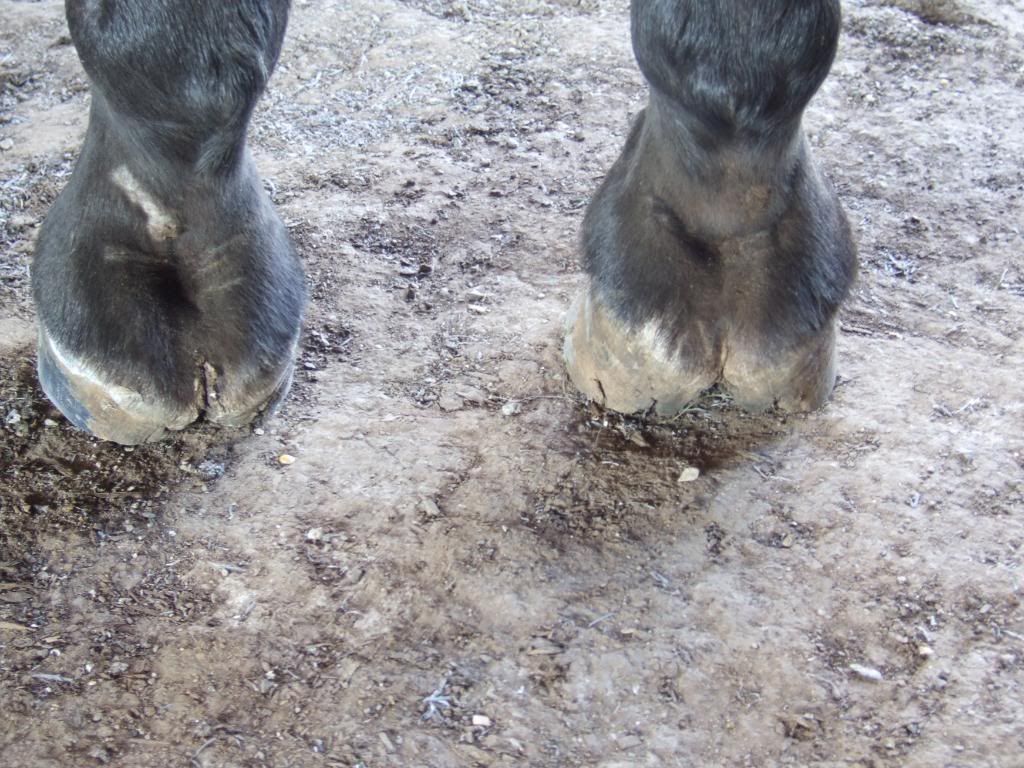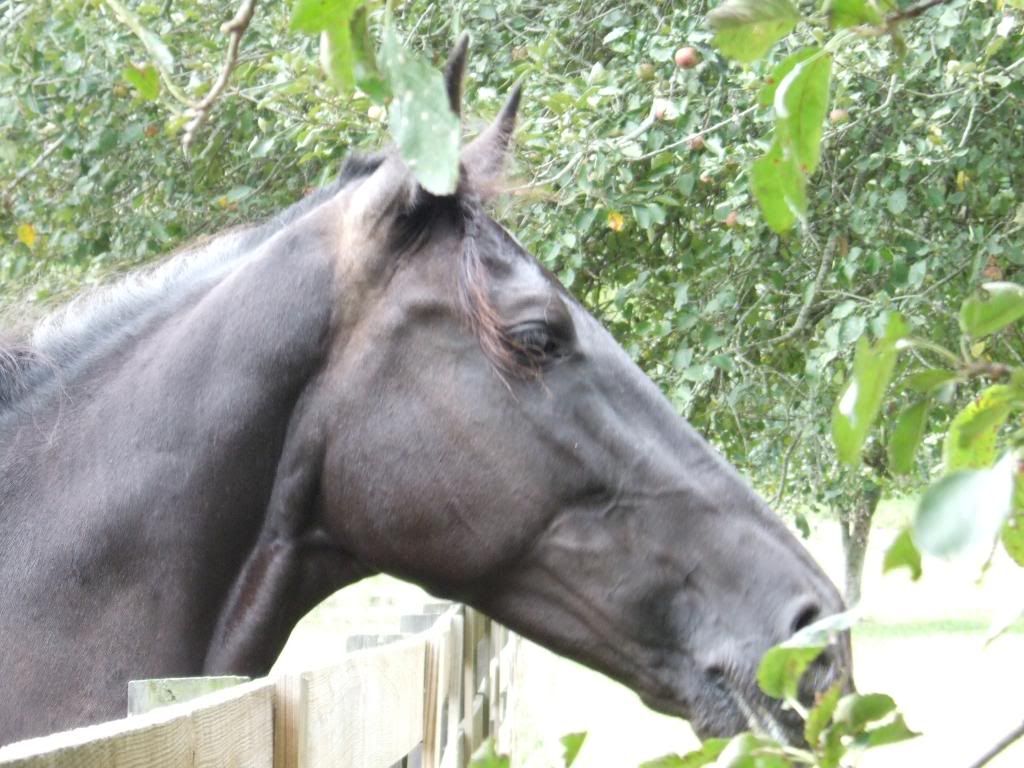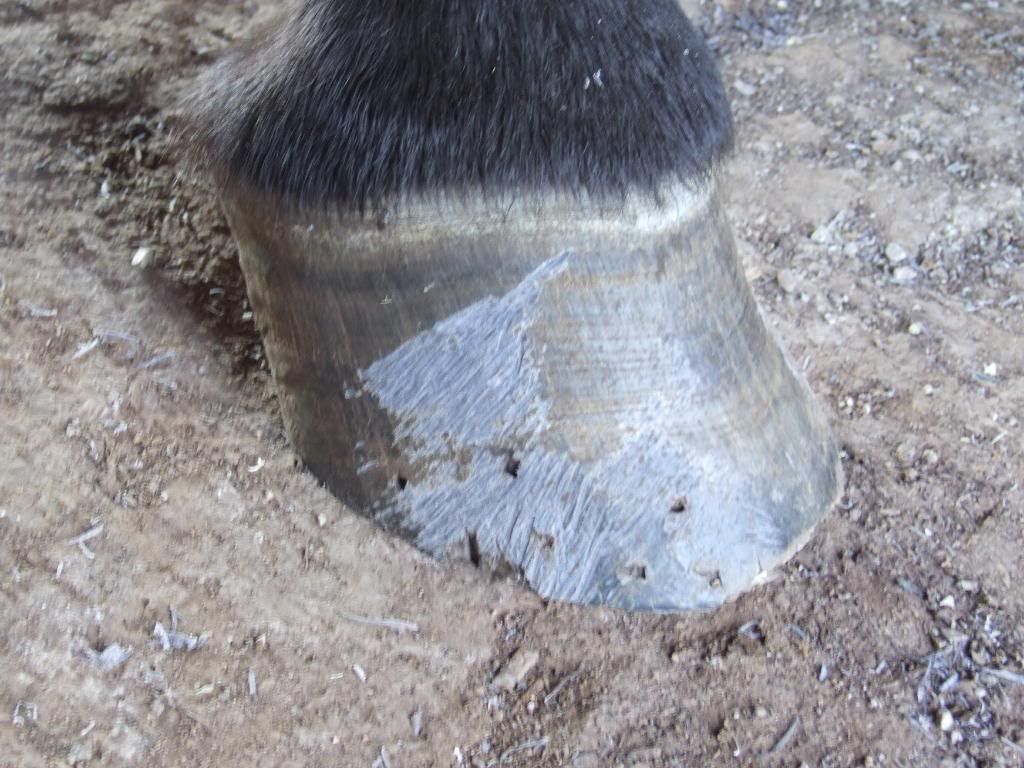I've learned that when certain things in life really get to me, I cannot think about them too much or I will drive myself crazy. I think most of these certain things that really get to me involve horses. I don't know why I feel the way I do about these issues. I even know that a lot of people feel like I do about them. I really have a hard time expressing myself when it comes to these issues, and that's why I have put off writing about them on this blog. Several other blogs cover topics involving these issues and I read them often. For the most part, I agree with their opinions.
I am hesitant to start this entry because I'm afraid my passion for these issues will explode and I will find myself rambling and ranting on in complete chaos, no one will understand anything that comes out, and I will work myself up and get pissed off. People seem to be more passionate about certain issues when it applied to them directly and they have seen first hand the consequences of the actions of some heartless, money-hungry losers.
So here goes my first attempt. I will write about several topics but my first one is going to be about what I am so passionate about: The Tennessee Walking Horse and soring.
When I first moved to Tennessee, I was absolutely appalled to find such a small number of people from this state actually know what soring is. I asked numerous people I work with what they thought about the Tennessee Walking horse. Do you know what they said? ..."Oh yeah, that's the cool horse that does that really neat run with his legs going so high right? I saw him at the Vols homecoming game last year. Everyone was going crazy when that horse ran around the stadium doing that walk...."
And then I would say...."do you know that most if not all horses doing "that walk" have had chemicals put on their legs to cause them pain or items put on their feet to cause pressure points so that with every step they take, they are in a tremendous amount of pain and they are literally trying to get away from it by walking that way?" And then I would get this look of amazement that something they thought was so great would be the result of something so wrong.
What's the easiest way to stop soring....Inform the public (that is the non-horsey people)....no one is going to cheer for the horse running around the stadium if they all know what it had to endure to get there.
I know I will probably get criticized....but I'm going to say it anyways. I'm convinced that ALL horses on packages are or have been sored and probably a lot of the plantation horses and lite shod horses. Thankfully, a lot of the anti-padded anti-soring people compete in light shod but I know for a fact soring still happens there too.
I've known about this issue for quite some time now but I have really dug deeper into it since Steven bought his Tennessee Walking Horse mare Twiggs.
Twiggs was a show horse in her younger days, probably from age 2-3 to 8. She is 9 now and we have owned her for a year. Our previous barn bought her from someone who I assume was showing her because she still had pads on when they brought her home.
This is not a picture of Twiggs but these pads are the same as what she had on. The chain around this horse's pastern is called an "action device" by the industry. In theory, the motion of the chain bouncing up and down on the horse's ankle causes him to lift his feet and keep his rhythm. The problem with this is that most of these horses have been sored. Soring is when anything is applied to the horse's leg or hoof, usually on the pasterns, heel bulbs, or coronet band, that causes the horse to become sore. Chemicals such as mustard oil, diesel fuel, kerosene, koppertox, and others have been used as soring agents. When the chain bounces around on the horse's leg, it hits those sores and causes pain. When the horse is performing the "Big Lick," he is literally trying to climb out of the chains that are causing him pain. The result: a flashly, big gait that wins the owner a blue ribbon.
I'm not going to go into the history of soring or even describe the other types of abuse these horses endure for the show ring. If you are reading this blog, you know how to research it yourself.
Here's what I really don't understand. When inspectors show up at TWH shows, almost 90% of the people load their horses back onto their trailers and leave. Now, how are the inspectors suppose to catch people soring their show horses when they all leave as soon as they show up? It's absolutely ridiculous! Why can't the inspectors set up at the entry gate of the show grounds. If you want to come in, your horses will have to be inspected first. End of story. But you know what would happen? No one would come, at all. Isn't this OBVIOUS? Why hasn't the government stepped in to allow inspectors the option of doing this? Steven suggested that the inspectors should show up near the end of the show. The show management would have a record of everyone that entered their horse and shown in classes. The inspectors could obtain that list, go trailer to trailer and inspect each and every horse that had been shown. Or, what about shortly after the show had started? Most horses would have already been entered in their classes. You might ask, well what's to say the owners will leave after they've shown or scratch their classes? Have some US Marshalls at the gate. If you were registered for a class, that proves you had the intent to show that horse. The Inspectors should have the right to inspect those horses and the US Marshalls should have a right to keep them on the premises.
Somone mentioned in response to one of my comments on another blog that it is hard to catch the people that sore because they leave. I argued that if they leave, isn't it obvious that they are guilty? I wondered why they couldn't stop them. The person pointed out that the situation is similar to that of a dog fight. It is very hard to prove dog fighting unless they are caught in the act. Now, I'm not sure about all of the laws, etc regarding dog fighting prosecution.....BUT, if a dog is tied up outside of a dog fighting ring, it has marks from previous fights, it has been "prepared" to fight, and it has been registered to fight.....wouldn't that be enough evidence to prosecute? The same thing applies to soring. The horse is at the show, it would show signs of soring if they were ever inspected, it may have evidence of past soring, it is cleaned and ready to show, and it is registered in the class. DUH! That proves that the owner had a clear intent to show the horse. Therefore, inspectors should have the right to inspect that horse and stop the owners from removing said horse from the show grounds. I think if the same situation would apply at a dog fight raid. The police officers and animal abuse investigators would not allow the owners to remove the dogs before they had a chance to look at them. It may take a little more time for a group of inspectors to unload and find show records of horses entered but they should not allow ANYONE to leave unless they were inspected. The catch would be that in order for the horse to be inspected, it would have had to be entered in a class, proving intent to show. That's why inspectors should show up after the show has started and catch everyone who has already entered classes.
There are so many ways that the magnificent Tennessee Walking Horse is abused. From soring to pressure shoeing, to tail docking to stewarding, the abuse never ends. When will it change?
This picture is of Twiggs' hoof before we allowed a barefoot trimmer trim her feet. I know in this picture, it looks like she has not had her feet trimmed in many months. But honestly, she had been shod 6 weeks prior. In this picture, we had only owned Twiggs for about 3 months max. She had previously been shod by a man in Birmingham, AL. I don't think this guy ever trimmed her sole or frog. Her feet do grow super super fast though.
The barefoot trimmer we used was appalled at Twiggs' feet. I didn't know much about the guy but we spoke about theory and method of trimming before I allowed him to come out. I agreed with his theories and we talked about taking Twiggs down slowly so she could adjust to the new angles. He finished her left front first. As soon as he put it back on the ground, I could see Twiggs shifting her weight to keep off of it. I began to worry.


Twiggs was sore for a good 2 weeks. We thought at first that her soreness resulted from the angle changes when the guy chopped her feet down. By no means did he "take her down gradually."
Then, we noticed Twigg had a crack in the middle of her frog that had gotten really deep in her right front and had actually traveled up between her heel bulbs. She had a severe thrush problem in this crack. Once the extra hoof was off and she was able to feel the ground with her frog, the thrush really began to bother her. We treated her and within a couple of days she wasn't sore anymore. I do believe some of the soreness was from the angle changes though.
In this next picture, you can see the crack going between her heel bulbs. You can also clearly see a huge scar on her pasterns. This scar is from being sored in the past. She has a similar scar on her other leg too you just can't see it well in this picture.


When Twiggs was on pads, or packages, or stacks or whatever the hell you want to call them, the farriers had built up her feet so much that she developed the crack, which actually goes down to where her frog should be. We have had so much trouble this past winter with thrush getting back into this crack. We had a really wet winter and it was really hard to keep it dry and clean. If she was out in too much mud, the thrush came right back. There really wasn't any way of keeping it clean and free of debri unless we kept her up all of the time and kept her foot wrapped. (which we did a couple of really bad weeks.)
It's so sad to see her scars and feet. I can't imagine what she has gone through in her life. Once, I was applying koppertox in the crack in her frog. I spilled a little onto her heel bulbs and quickly grabbed the hose to wash it off. (remember koppertox has been none to be a soring agent when used on skin). As soon as I sprayed water on her pastern she jerked. I know it wasn't from the water. Twiggs has never even flinched when were treating her, washing her feet off, etc. But when that water hit the back of her pastern where her scars are, I'm sure it took her back to all of those times when previous owners would poor chemicals onto her legs or would doctor her legs after they had sored the hell out of them. It breaks my heart.
Twiggs is why I am so passionate about this issue. When I can see the evidence of soring every single day when I look at her, it makes me that much angrier...that much more passionate about doing something about it. I'm becoming more and more convinced this is my calling. To help end the practice of soring and punish the hell out of the pieces of shit that could do this to a horse as beautiful as a Tennessee Walking Horse.....
And also, help protect other horses from abuse by people that are after a measily blue ribbon...



I hate the cruelty that horses have to endure for someones pocket book, both of our horses were resued race horses that were being sent to slaughter, when we first got them they acted as though they had been abused, Willow had a bad case of rain rot and their hooves were in bad shape. Willow had a leg injury and Badger has a blind eye. Today they are sound, trusting and valuable companions who have come a long way and even shocked a few people we know about how their temperment is now compared to when they first came to us, we do not mistreat them.... We show them lots of LOVE! They were also both pregnant, so really we saved 4 horses!
ReplyDeleteOur horses are Thoroughbreds, we rescued them so we are not positive about the breed of the stallion that fathered them, we were told possible Arabian but we have no record unfortunatly. but it is very evident that it was the same father, the foals look almost identical!
ReplyDelete